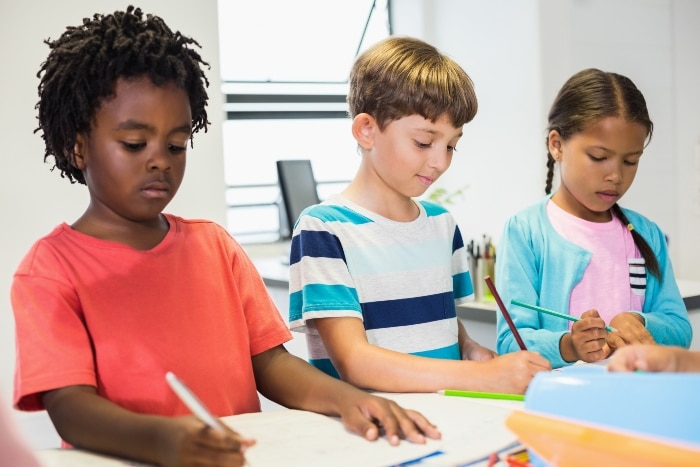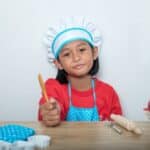Do you want to know how to teach multiplication to kids? Teaching multiplication to kids can be both fun and challenging. By incorporating these additional strategies into your teaching approach, you can create a supportive and engaging learning environment that empowers children to develop strong multiplication skills and a deeper understanding of mathematical concepts. Remember to celebrate their achievements and foster a positive attitude towards learning math. Here are some tips to make the process engaging and effective:

Start with the Basics
Ensure that kids have a solid understanding of addition before introducing multiplication. They should be comfortable with adding numbers before moving on to multiplication.
Use Visual Aids
Visual aids such as arrays, counters, or objects like blocks can help kids understand the concept of multiplication. Seeing groups of objects arranged in rows and columns helps them grasp the idea of repeated addition.
Create Interactive Games and Activities
Design interactive games and activities that specifically target multiplication skills. Incorporate board games like “Multiplication Bingo” or “Multiplication War” where players practice multiplication facts while having fun. Online platforms and educational apps also offer a wide range of interactive multiplication games that children can play individually or in groups.
Encourage Mental Math
Foster mental math skills by encouraging children to practice multiplying numbers mentally. Encourage them to identify patterns, use known facts to solve new problems, and develop efficient mental strategies for multiplication.
Multiplication Tables
Encourage kids to memorize multiplication tables. Start with the easier tables like 2s, 5s, and 10s before moving on to more challenging ones. Flashcards, games, and songs can be helpful tools for memorization.
Encourage Problem-Solving
Present kids with word problems that require multiplication to solve. Encourage them to identify key information, determine the operation needed, and solve the problem step by step. This helps reinforce the practical application of multiplication in everyday situations.
Promote Critical Thinking
Encourage children to engage in critical thinking and problem-solving activities that require them to apply multiplication concepts in novel and challenging situations. Present them with multi-step word problems, puzzles, and mathematical challenges that require them to analyze information, make connections, and devise strategies for solving problems involving multiplication. Encourage children to explain their reasoning, justify their solutions, and explore multiple approaches to problem-solving, fostering their mathematical reasoning skills and resilience in tackling complex multiplication tasks.
Provide Differentiated Instruction
Recognize that children have different learning styles and paces of learning. Provide opportunities for individualized instruction and support based on each child’s needs. Some children may grasp multiplication quickly, while others may require more time and practice.
Real-Life Examples
Relate multiplication to real-life situations to make it more relevant and meaningful for kids. For example, you can talk about doubling recipes, grouping items into sets, or calculating the total number of items.
Hands-on Activities
Engage kids in hands-on activities that involve multiplication. This could include activities like making arrays with objects, skip counting with hops or jumps or using multiplication worksheets with pictures.

Group Work and Peer Teaching
Encourage peer learning by having kids work together in pairs or small groups. They can explain concepts to each other and practice multiplication together.
Incorporate Technology
Take advantage of technology to enhance multiplication instruction and provide additional practice opportunities for children. There are numerous educational websites, apps, and interactive multimedia resources available that offer engaging multiplication activities, tutorials, and games. Integrating technology into your teaching repertoire can cater to different learning styles and preferences, making multiplication learning more accessible and enjoyable for children.
Provide Positive Reinforcement
Offer praise and positive reinforcement when kids make progress or demonstrate understanding. Celebrate their achievements and encourage them to keep practicing.
Review and Reinforce
Regularly review previously learned multiplication concepts to reinforce retention. Quick review sessions or periodic quizzes can help reinforce multiplication facts and keep them fresh in children’s minds.
Make it Fun
Incorporate elements of fun and creativity into multiplication lessons. Use colorful visuals, interactive games, and storytelling to make learning multiplication an enjoyable experience. Consider incorporating art projects, songs, or role-playing activities to keep kids engaged and motivated.
Be Patient and Supportive
Understand that learning multiplication takes time and patience. Be patient with kids as they learn at their own pace, and provide support and encouragement along the way.
You can create a dynamic and enriching learning experience that empowers children to develop strong multiplication skills, deepen their mathematical understanding, and cultivate a positive attitude towards learning mathematics. Remember to adapt your instructional methods to accommodate the diverse needs, interests, and learning styles of your students, and celebrate their progress and achievements along the way.








Learning multiplication is such a difficult thing for children. Thank you for this useful peace of advice.
I think learning math is best done through playing games. We also liked to play restaurants etc,
I remember these days. It could be tricky with certain numbers but you have some great ideas on how to help.
I remember helping my kids with this. Multiplication can be a bit tricky too. Great ideas here on helping.
These are great tips to help kids with their multiplication tables, seems effective. Thanks for sharing!
Great tips! I made learning Multiplication fun for my kids and they were able to learn faster. I now do the same method with my grandkids. Thanks for sharing this information with us
These are great tips for teaching children multiplication. I’ve always found that visual aid and hands on methods with positive reinforcement was a good combination!
Make it fun is very important tip that you provide because we all know that kids are easy to get bored especially when they don’t want what they are doing.
These are great suggestions for teaching multiplication to kids! Incorporating technology is a really good one.